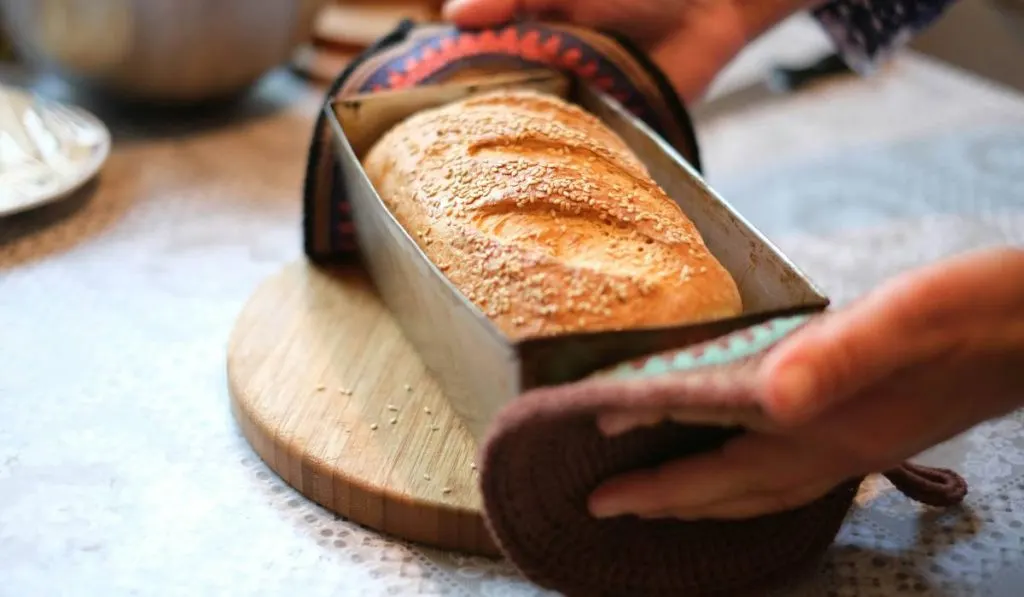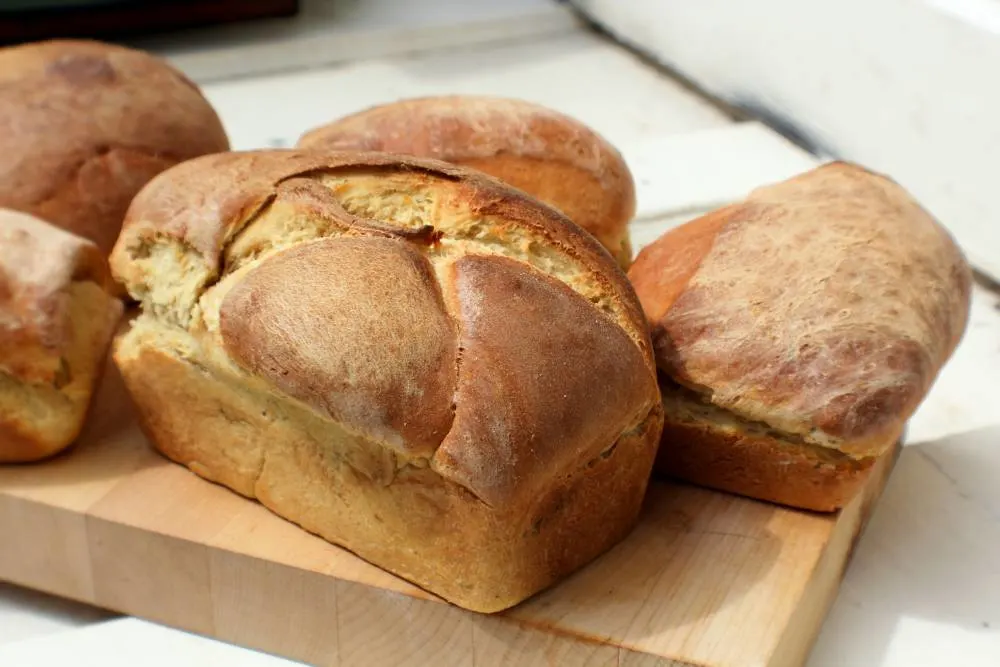
Struggling to keep carbs low while missing your morning toast? Is your bread machine collecting dust? Turn the tables with our guide to crafting the perfect low carb bread at home—effortlessly with your bread machine!
TL;DR:
- Understand the basics of low carb baking and the ingredients you’ll need.
- Discover our top-tested low carb bread machine recipes.
- Learn how to tweak recipes for perfect results every time.
- Get insider tips on making bread that’s both low carb and delicious.
- Explore FAQs to enhance your low carb baking skills.
Why Low Carb Bread and Why a Bread Machine?
Transitioning to a low carb diet is a popular approach for many seeking better health, weight management, and improved metabolic profiles. Here’s why opting for low carb bread and utilizing a bread machine can revolutionize your diet:
The Benefits of Low Carb Bread
- Improved Blood Sugar Control: Low carb diets can help stabilize blood sugar levels, crucial for those managing diabetes or insulin resistance.
- Enhanced Weight Loss: Reducing carbohydrate intake has been linked to more effective weight loss and fat reduction.
- Longer Satiety: High in fiber and protein, low carb bread can help you feel full longer, reducing the urge for snacking.
Advantages of Using a Bread Machine
- Consistency and Convenience: A bread machine takes out the guesswork and manual labor of bread making, providing consistent results with minimal effort.
- Customizable Ingredients: You can control exactly what goes into your bread, allowing for healthier choices and dietary accommodations.
- Freshness on Demand: Enjoy freshly baked bread anytime, perfect for maintaining a low carb diet without compromising on taste or texture.
Essential Ingredients for Low Carb Bread
Making low carb bread requires substituting traditional high-carb ingredients with healthier alternatives. Here’s what you need and why:
Key Ingredients
- Almond Flour: A staple in low carb baking, almond flour provides a moist texture and is rich in vitamins and minerals.
- Coconut Flour: Adds a light, fluffy texture to bread while being low in carbs and high in fiber.
- Flaxseed Meal: Excellent source of omega-3 fatty acids and fiber, it adds a nutty flavor and dense texture to bread.
Supplementary Ingredients
- Xanthan Gum: Used to replace gluten, xanthan gum helps in binding the ingredients, which is crucial for the bread’s elasticity.
- Eggs: Provide structure and richness, helping to create a satisfying mouthfeel.
- Psyllium Husk: Increases the bread’s fiber content, essential for achieving a bread-like texture and promoting digestive health.
Our Favorite Low Carb Bread Machine Recipes
Explore our curated list of recipes that have been tested and loved by many. From savory garlic and herb to sweet cinnamon loaf, find your next breakfast staple here.
1. Savory Garlic and Herb Low Carb Bread
- Ingredients: 1 cup almond flour, 1/2 cup coconut flour, 1/4 cup flaxseed meal, 1 tbsp garlic powder, 1 tbsp dried herbs (rosemary, thyme, oregano), 3 eggs, 1 tsp xanthan gum, 1 cup warm water, 2 tsp yeast, 1 tsp salt.
- Instructions:
- Combine all dry ingredients in the bread machine pan.
- Add eggs and warm water to the mixture.
- Set the bread machine to the ‘gluten-free’ setting and start the cycle.
- Once the baking cycle is complete, remove the bread and let it cool before slicing.
- Serving Suggestion: Serve toasted with a pat of butter or as a side to your favorite salads.
2. Sweet Cinnamon Low Carb Loaf
- Ingredients: 1.5 cups almond flour, 1/2 cup golden flaxseed meal, 1/4 cup whey protein isolate, 2 tbsp cinnamon, 1/4 cup erythritol, 4 eggs, 1 tsp xanthan gum, 1.5 tsp baking powder, 1 cup unsweetened almond milk, 2 tsp yeast.
- Instructions:
- Place all dry ingredients into the bread machine pan and mix slightly.
- Add eggs and almond milk to the pan.
- Select the ‘sweet bread’ setting on your bread machine and start the cycle.
- Once done, remove the loaf from the machine and let it cool on a wire rack.
- Serving Suggestion: Perfect for breakfast, served with a smear of cream cheese or low carb fruit jam.
3. Hearty Walnut and Seed Bread
- Ingredients: 1 cup almond flour, 1/2 cup coconut flour, 1/3 cup sunflower seeds, 1/3 cup chopped walnuts, 1/4 cup sesame seeds, 1/4 cup pumpkin seeds, 3 eggs, 1 tsp salt, 1 tbsp honey (optional), 1 cup water, 2 tsp yeast.
- Instructions:
- Mix all dry ingredients together in the bread machine pan.
- Add eggs, water, and honey to the pan, ensuring the yeast does not touch the liquid until the cycle starts.
- Set the bread machine to the ‘whole wheat’ setting and begin the baking process.
- After the baking is complete, allow the bread to cool thoroughly before slicing.
- Serving Suggestion: Ideal for sandwiches or as a robust accompaniment to soups and stews
Adjusting Recipes for Your Machine
Every bread machine is unique, which can make baking low carb bread a bit of a challenge. However, with a few adjustments, you can ensure that these recipes work perfectly in your specific model. Here’s how to tailor these recipes to meet the quirks and capabilities of your bread machine for the best possible results.
Understanding Your Bread Machine’s Settings
- Read the Manual: Start by familiarizing yourself with your machine’s manual. Pay special attention to the settings for different types of bread such as gluten-free, whole wheat, and sweet bread, as these will impact how your low carb bread bakes.
- Know the Capacity: Ensure the recipes match your machine’s capacity to avoid overflows or under-filled loaves. Adjust the ingredient quantities proportionally if needed.
Tweaking Ingredients for Best Results
- Yeast Reaction: Some machines may not heat up as quickly as others, affecting how yeast activates. If your bread isn’t rising well, try increasing the yeast slightly or using a preheated liquid to kickstart the reaction.
- Adjusting Flours: Different brands of almond or coconut flours can absorb liquids differently. Start with the recommended amount and adjust if the dough seems too wet or dry during the kneading cycle.

Experimenting with Cycles and Timing
- Gluten-Free Setting: If your bread machine has a gluten-free setting, use it. Low carb breads often benefit from this setting due to similar kneading and rising patterns.
- Watching the Dough: The first few times you try a new recipe, it’s helpful to watch the dough during its mixing and first rising phases. If the dough looks too stiff or too slack, you can adjust the amount of liquid or flour the next time.
- Timing Adjustments: Adjust the rising times if needed. Some machines come with customizable settings that allow you to alter rise times and baking durations, which can be very useful for achieving the perfect loaf.
Monitoring and Making Notes
- Keep a Bread Journal: Track what works and what doesn’t for each recipe, noting any tweaks you’ve made. This can be an invaluable resource as you continue to refine your low carb bread making skills.
- Consistency is Key: Once you find the right settings and adjustments for a recipe, stick to them for consistent results.
By understanding and adjusting to your bread machine’s specific needs, you can master the art of low carb bread making, ensuring each loaf is as fluffy and inviting as you desire.
Pro Tips
As a seasoned journalist deeply immersed in the world of low carb baking, I’ve gathered a treasure trove of tips and tricks to help you perfect your low carb bread machine recipes. Here’s what I’ve learned through years of tweaking and perfecting these delightful creations:
Optimizing Ingredients for Perfection
- Warm Water for Yeast: Always use warm water, not hot or cold, to activate the yeast effectively. The ideal temperature should be around 110°F (43°C) to maximize the yeast’s activity without killing it.
- Natural Sweeteners: Incorporate a touch of honey or an equivalent keto-friendly sweetener. This not only adds a mild sweetness but also helps to brown the crust beautifully without adding too many carbs.
- Room Temperature Ingredients: Ensure that all your ingredients, especially eggs and any liquid fats, are at room temperature to help the yeast work best.
Technique Tips
- Gentle Mixing: Avoid overmixing the dough. Overmixing can lead to tough bread as it develops the proteins too much for the delicate balance needed in low carb breads.
- Accurate Measurements: Use a digital scale for ingredients instead of volume measurements for precision and consistency, particularly important for low carb flours which can settle differently in measuring cups.
Common Missteps to Avoid
To ensure your low carb bread not only rises well but also tastes great, steer clear of these common baking errors:
Key Pitfalls in Low Carb Bread Making
- Avoid Excess Liquid: Too much liquid can cause the bread to collapse. Low carb flours absorb less liquid than regular wheat flour, so adjustments are often necessary.
- Check the Expiry of Ingredients: Expired baking powder or yeast can ruin your bread. Always check the expiry dates before use to ensure they are active and effective.
- Monitoring Baking Progress: Since every bread machine is different, keep an eye on the initial baking cycles when trying a new recipe to make adjustments for future bakes.
Conclusion
Mastering the art of low carb bread making with a bread machine is an incredibly rewarding journey. Armed with the right knowledge and the appropriate tools, you can transform simple ingredients into delectable loaves that not only fit into a health-conscious lifestyle but also delight the senses. The journey to perfect bread involves experimentation and precision, from selecting the right ingredients to tweaking settings on your machine. Each variation in ingredients or settings can significantly enhance the flavor, texture, and nutritional value of your bread.
As you explore different recipes and integrate professional tips, you’ll discover the unique joy that comes from creating beautiful, tasty, and wholesome breads right in your kitchen. So, dive into the world of low carb baking, experiment with new flavors, and relish each slice of your homemade creations. After all, the path to baking perfection is paved with each thoughtful adjustment and every delicious loaf you bake.
FAQs
What makes bread low carb?
Low carb bread substitutes high-carb ingredients like wheat flour with low-carb alternatives such as almond flour, significantly reducing its carbohydrate content.
Can I use regular recipes in my bread machine?
Yes, but modifications might be needed. Reducing yeast and increasing rising time can help adapt regular recipes for a low carb diet.
How do I store low carb bread?
Low carb bread is best stored in a cool, dry place. Refrigeration can extend its life, but be sure to wrap it well to maintain freshness.
Is homemade low carb bread healthier?
Yes, making your bread allows you to control the ingredients, avoiding preservatives and additives found in commercial breads.
Why does my low carb bread fall after baking?
This is often due to the lack of gluten. Ensure the dough is dense enough and not over-proofed before baking.
Join Us and Transform >
Don’t Be an Amateur! Master the Art of Sourdough Bread!




Leave a comment